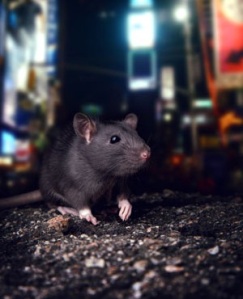There may be 8 million stories in the Big Apple, but one of them, that New York City is home to 8 million rats, or one for every human resident is probably a tall tale, according to research by a Columbia University statistician.
In truth, the city’s rat population is probably closer to 2 million, said Jonathan Auerbach, a Columbia doctoral student who wrote an essay on the subject published in Significance magazine.
The urban lore that there are as many rats as citizens dates back at least a century, Auerbach says. It may have endured in part because reliably estimating the city’s rat population is difficult even though the creatures are hardly invisible, as most New Yorkers who see them skittering about the subway tracks or hear them rustling through trash piles will attest.
“Animals are terrible survey respondents”, he wrote in the article, which was the winning entry in a young statisticians writing competition organised by London’s Royal Statistical Society.
Auerbach did not let the difficulties deter him, arguing that more precise estimates would be useful given that the rodents spread disease, start fires by chewing on electric cables and occasionally bite people.
His initial plan was to use a method that involves capturing a random sample of rats, marking them, releasing them, and then capturing another random sample of rats.
But the city’s health department, which is responsible for dealing with rats, was not enthralled with the idea, Auerbach wrote.
Instead, he used complaints from the public about rat sightings, which the city tracks and publishes online. Combining the data with a number of assumptions, he was able to extrapolate the number of rat-occupied lots to about 40 500 across the city, or less than 5% of the total.
If each inhabited lot is home to a typical colony of 50 rats, which would mean there are about 2 million rats in the city.
In a statement, the health department called Auerbach’s “interesting,” but added that there was not simply any valid method for counting any large city’s rat population, nor would it be particularly useful if there were.
“The precise number of rats would not influence how the city and property owners should respond to signs of rats”, the department said.


